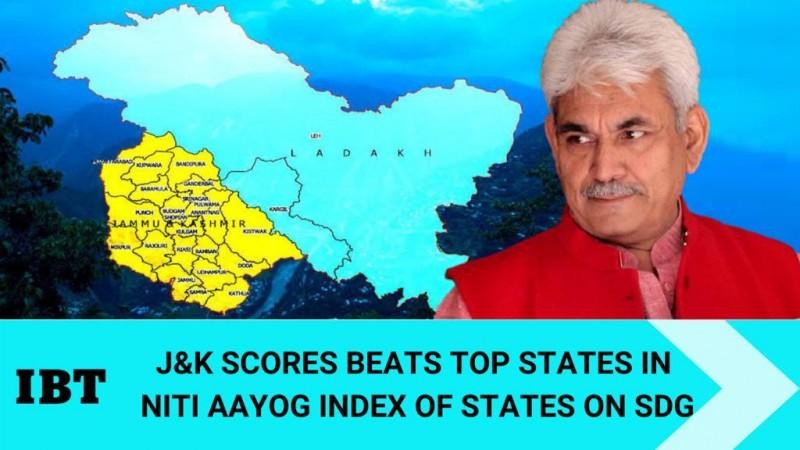Despite confronting challenges of isolation, backward inaccessible areas lack of an industrial base, and employment opportunities, the Jammu and Kashmir performs better than many states and Union Territories (UTs) in NITI Aayog's index of states on Sustainable Development Goals (SDGs).
The Jammu and Kashmir even left states like Maharashtra, Telangana others behind in the NITI index. Although J&K has improved its ranking in almost all sectors, its performance is excellent in the sectors like health, agricultural productions, education, renewal energy, providing civic amenities, enhancing forest cover, and ensuring gender equality during the last year.

Performance in the health sector improved
According to the Routine Immunization Programme Dashboard (Health Management Information System), during the period April 2019-March 2020, 91 percent of children in India in the age group of 9-11 months were fully immunized (One dose of BCG, 3 doses of DPT and OPV and one dose of Measles vaccine). The national target is to increase it to 100 percent. Maharashtra, Jammu & Kashmir, and Ladakh have achieved the target.
HIV incidence per 1,000 uninfected population is estimated to have declined from 0.07 in 2017 to 0.05 in 2019. Jammu and Kashmir and Ladakh lead among the UTs with HIV incidence as low as 0.02 per 1,000 uninfected people.
In the year 2019, the mortality rate of children under the age group was 38 among 1,00,000 but this has now come down to 23. Furthermore, during the last one-year percentage of institutional deliveries has increased from 66.2 percent to 94.60 percent.

School drop-out cases decreased
In the year 2019, annual drop cases in the secondary level were 24.81 percent but these cases have come down to 17.81 percent during the last year. Furthermore, the pupil-teacher ratio at the secondary level is also improved to 12:1 in the Union Territory. 84 percent of schools in Jammu and Kashmir have electricity and drinking water facilities.
Improvement in male-female sex ratio
Like other parts of the country, J&K is also confronting the problem of the gap between male, female ratio. In the year sex ratio in J&K was 917 females per 1000 males. This ratio has improved to 927 females during the last year. Furthermore, crime against women is also declined during the last year.
J&K leads among UT in generating renewal power
India has one of the largest and most ambitious renewable capacity expansion programmes in the world. India has committed to an Intended Nationally Determined Contribution (INDC) target of achieving 40 percent of its total electricity generation from non-fossil fuel sources by 2030, with an ambitious target of 450 GW from renewable sources. As of 2020, 36.37 percent of India's total electricity generation is from renewable energy. With power generation close to 2.5 GW, Jammu and Kashmir lead the UTs in the generation of renewable power.
Forest cover has shown an increase
As per the Index report of NITI Aayog, forest cover has increased by 20 percent during the last year. As per the report, in the year 2019, the total forest area in J&K was 10.46 which has increased to 39.66 percent in the year 2020. A total of 42 forest types are found in the Union Territory of J&K which are the highest in the country and denotes the diversity of forest ecosystems in J&K.











